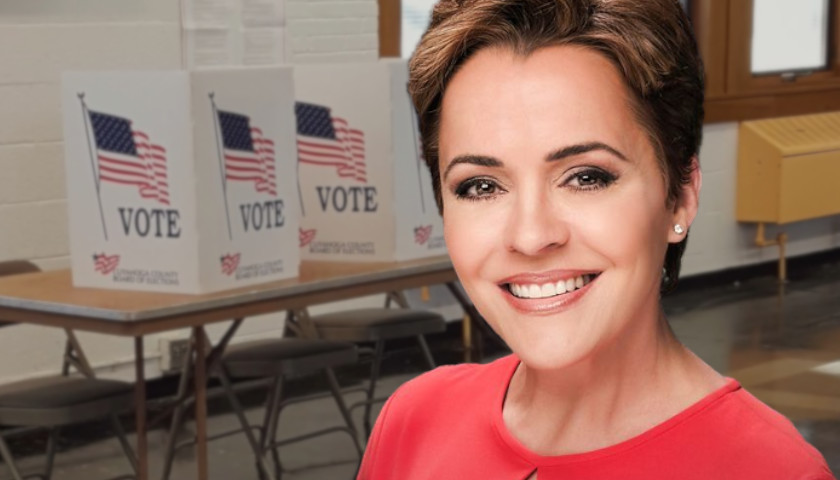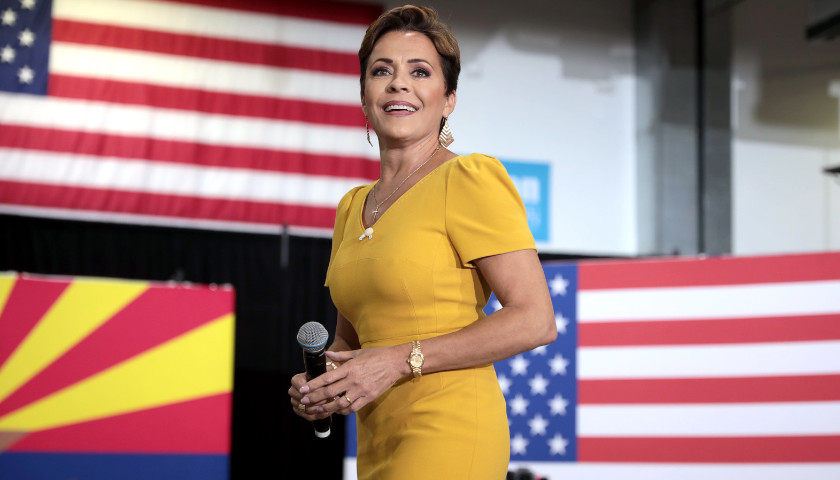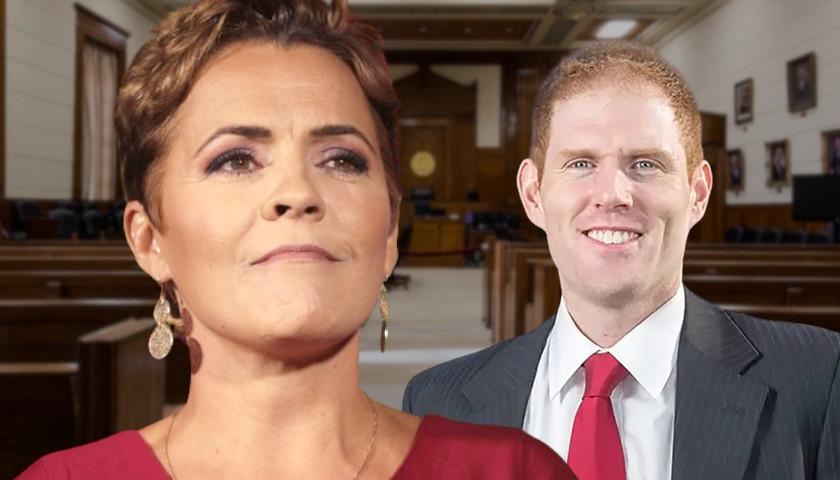A staffer for Republican gubernatorial candidate Kari Lake told The Arizona Sun Times that the candidate is preparing a lawsuit challenging the Arizona governor election results. On Monday, Democrat Katie Hobbs was declared the winner against Lake by less than 20,000 votes.
Lake said during a Monday evening interview with Fox News’ Jesse Watters that she has concerns about certifying the election.
“I can’t imagine our version of Joe Biden, Katie Hobbs, would win,” Lake said. “She didn’t campaign, she hid in her basement. She is a twice-convicted racist. I can’t believe the people of Arizona would vote for her and that she would win. But if that what’s happens at the end of the day, how do you certify an election that is this botched? And she’s the one that would certify her own election where it was botched. Where the machines didn’t work in more than a third of the polling centers.”
Lake was referring to a printer problem at the polls that affected over 30 percent of polling locations, primarily in red areas of Maricopa County.
The vast majority of the ballot tabulation finished around the state Monday evening, with an estimated 5,000 – 15,000 ballots left uncounted in Maricopa County, 39,129 in Pima County, 8,057 in Apache County, and a few smaller batches left around the state. Decision Desk HQ, CNN and the Associated Press called the governor’s race for Democrat Katie Hobbs, and previously called the U.S. Senate race for Democrat Mark Kelly and the secretary of state’s race for Democrat Adrian Fontes. However, the attorney general’s race has not been called, with Democrat Kris Mayes leading Abe Hamadeh by 3,087 votes.
Arizona law allows voters to “cure” their ballots within five business days after an election (by Tuesday), which means fixing a mistake such as an unmatching signature. However, if there is no signature, voters cannot cure their ballot after 7 p.m. on Election Day. If a voter forgot to bring identification to the polls so was given a provisional ballot to vote, they have five days to follow up and bring in proof of identification.
After the ballot tabulation finishes, county supervisors will announce unofficial results, which will be disclosed to the public and transmitted to the secretary of state. The result printed by the tabulating equipment will be certified by the county supervisors, constituting the official canvass.
The governing body of an election — here, the county supervisors — must conduct a canvass of the results between six and 20 days after the election. State officials certify the results after reviewing disputed ballots, conducting post-election audits, and double-checking numbers for accuracy. The secretary of state, governor and attorney general must sign off on the results of candidate elections in Arizona, while the chief justice of the Arizona Supreme Court joins the secretary of state and governor in certifying the results of ballot measure elections.
After the canvass is completed, the ballots are deposited with the county treasurers, who must keep ballots for federal elections for two years and those for state and local races for six months.
State law requires an automatic recount in tight races, where the difference “is less than or equal to one-half of one percent of the number of votes cast for both such candidates or on such measures or proposals.”
The key statute used to challenge election results is A.R.S. 16-672. Anyone is allowed to contest election results for five reasons: first, misconduct by election boards, or misconduct by officials participating in a canvass; second, if the winning candidate was ineligible for the office at the time of the election; third, if bribery was involved; fourth, if there were illegal votes; fifth, if the person or measure which won did not actually receive the highest or sufficient number of votes. The challenges must be brought in the superior court.
Hearings for challenges must be held within 10 days after the challenges are filed. The court must issue its decision within five days after hearing everything, “either confirming or annulling and setting aside the election.”
Every piece of tabulation equipment is tested and certified after the election by county officials. They were also testified and certified before the election. Arizona Corporation Commissioner Jim O’Connor, along with some other concerned Arizonans, warned county officials that electronic voting machines and tabulators were not certified, since the accreditations of the labs providing the certifications had allegedly expired prior to the election. In response, concerned county supervisors in Cochise County decided to conduct a hand count of the ballots in addition to the machine count. Although they faced legal challenges, the county supervisors there may still go ahead with the hand count.
The secretary of state conducts a “logic and accuracy test” both before and after the election, which is a random test of the election equipment open to the public and political party observers.
A small hand count of ballots may be conducted, to ensure that the tabulation equipment is working properly and accurately counting votes. If so, it must begin within 24 hours after the polls close on Election Day and must be completed before the county canvass. Ballots are counted from two percent or more of the precincts in a county, for up to five contested races. Maricopa County commenced a small hand count last Wednesday.
For more information, A.R.S. Titles 16 and 19 govern elections. The secretary of state provides an election procedures manual which contains detailed procedures. It has not been updated since 2019 due to a feud between Secretary of State Katie Hobbs and Attorney General Mark Brnovich, who refused to approve a newer version stating that the revisions — which included allowing ballot harvesting — did not comply with law.
Voters can verify their ballot was counted at arizona.vote.
– – –
Rachel Alexander is a reporter at The Arizona Sun Times and The Star News Network. Follow Rachel on Twitter. Email tips to [email protected].
Photo “Kari Lake” by Kari Lake. Background Photo “Voting Booths” by Tim Evanson. CC BY-SA 2.0





